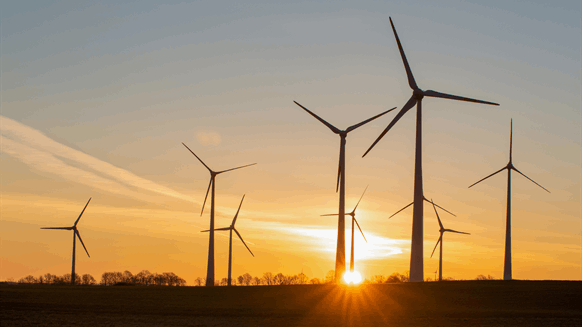As Western onshore wind markets faced many challenges, Chinese OEMs were protected by the country’s huge domestic market and localized supply chain.
According to Wood Mackenzie, China’s land industry is now poised to take advantage of its low-cost position and economies of scale to expand into other territories. Meanwhile, in the offshore market, in 2022 Chinese suppliers exported their first jacket order and secured their first monopile order since 2008 as a healthy cost base, excess domestic supply and strong finances made them unprecedentedly competitive.
Advantage of onshore wind: scale, cost and diversification
Chinese onshore wind companies are targeting overseas markets through multiple channels, from asset investment and engineering, procurement and construction (EPC) to equipment supply. As of 2021, Chinese wind companies had an estimated global footprint of 45 countries, equivalent to 14 GW of capacity, spanning asset ownership, turbine supply, EPC contracts or a combination of these.
China’s strength comes from its massive scale, lower cost and diversification. Its wind companies have enjoyed higher profitability than their Western peers thanks to a strong domestic market, a strong local supply chain and reduced exposure to logistics and commodity risks.
However, its expansion will not be all simple. Barriers include financing, increased technical market entry requirements, protectionist policies and growing geopolitical risk, which could affect the bankability of overseas projects. The entrenched competition from Western OEMs and investor caution are likely to deter Chinese entry into the US and Western European markets, for example.
A proactive approach with a local presence is key to global success. Indeed, it is crucial for Chinese asset investors and EPC companies to ensure that projects are tailored to local market demand and counter protectionist opposition. Chinese OEMs and manufacturers in the supply chain can benefit from the globalization of Chinese asset investors, but they need to work directly with Western OEMs and developers to build a sustainable pipeline. They know this and are actively looking to collaborate with Western companies.
Emerging markets and major green hydrogen infrastructure projects present the most likely targets for China’s overseas expansion. Many Belt & Road Initiative countries offer an advantageous route to entry into the Chinese market, with companies effectively backed by the power of China’s government and the doors opened by its emerging market climate diplomacy.
Green hydrogen projects in the emerging markets of Africa, the Middle East, Latin America and Asia present a significant opportunity for Chinese financing, especially in markets with existing Belt & Road policies. Many Belt and Road countries require significant investment in grid infrastructure to increase their renewable energy penetration, which could lead to synergistic investment.
Offshore wind expansion: growth amid a multitude of challenges
A massive expansion of offshore supply chain production has allowed Chinese manufacturers to cut costs compared to their global competitors, despite the rising cost of raw materials. This cost competitiveness has seen many Western companies overcome their previous reluctance to hire Chinese suppliers. In response, Chinese manufacturers are expanding and upgrading their production capacity to meet growing global demand and next-generation technology.
However, there are countless challenges. Rising transportation costs and regulatory uncertainty, for example, can offset the price advantage and test the ability of Chinese suppliers to turn a profit on overseas projects. Some countries and regions, such as the EU, have imposed anti-dumping duties on wind turbine components from Chinese suppliers. Complex grid connection requirements, intellectual property infringement issues and strict health and safety standards may require product redesigns and impose significant added costs for exported turbines.
Still, the global balance of supply and demand has never been better for Chinese offshore suppliers. The supply and demand outlook for offshore towers and monopiles suggests that delays or cancellations of Western installations will create bottlenecks.
This could make it harder for developers and policymakers to reject Chinese suppliers.
In addition, China’s installation boom in 2021 has led to a near-term oversupply overseas that will create opportunities for Chinese manufacturers to look overseas. Updated and new installations will support sustained exports once a track record has been established.
Exports would also help Chinese suppliers stabilize income. The phasing out of offshore wind subsidies in China by 2022 weighed heavily, highlighting the risks for Chinese players to focus solely on the domestic market.
The greater diversification of Chinese monopile suppliers means they have stronger financials than their European counterparts. This will allow them to absorb higher costs and risks despite playing on a battlefield away from home.
Major Chinese offshore turbine manufacturers have taken the first steps and subsea cable suppliers are making their mark. Chinese offshore wind tower and foundation suppliers have been diving into the European market by seeking joint ventures and establishing local subsidiaries and facilities.
To contact the author, send an email to bojan.lepic@rigzone.com


